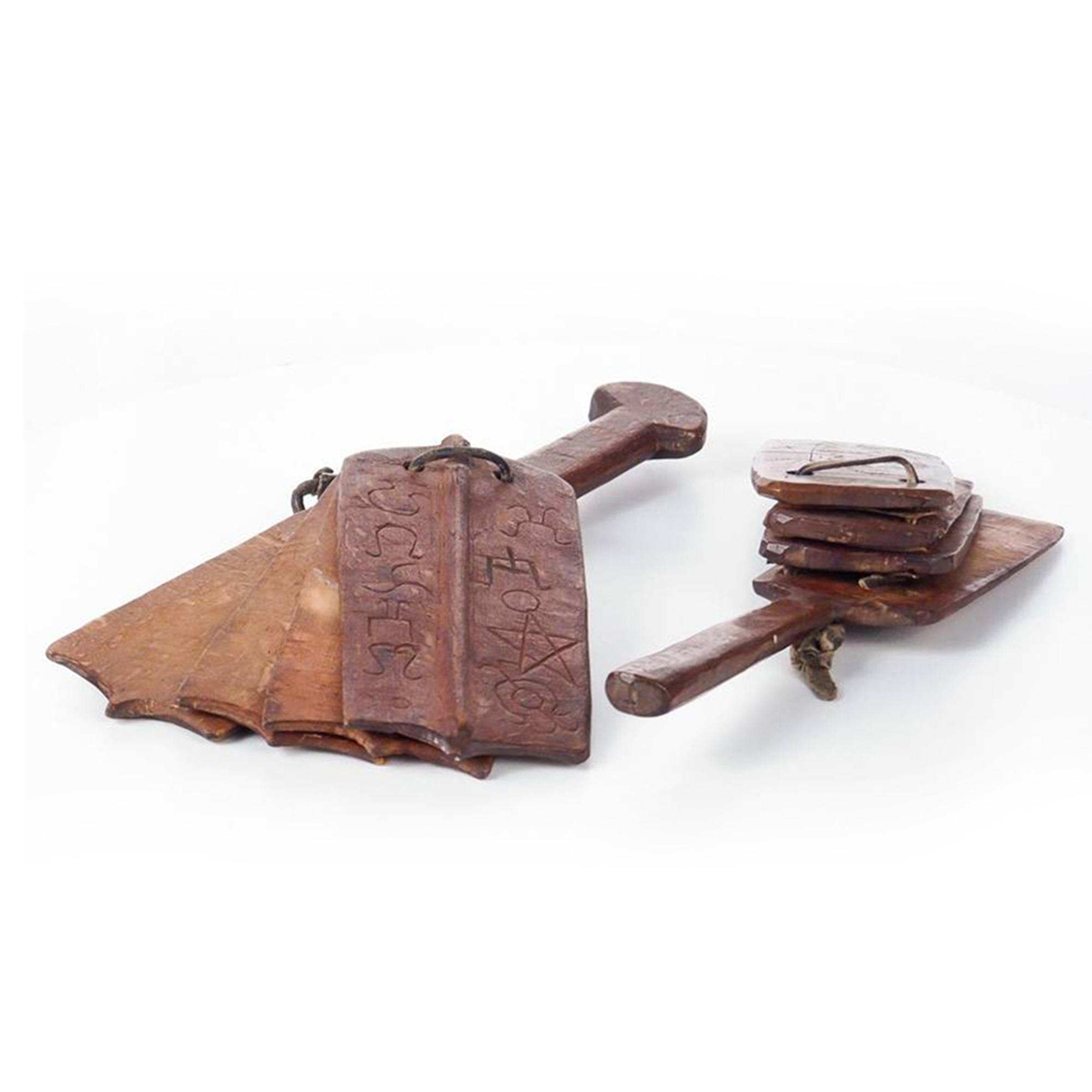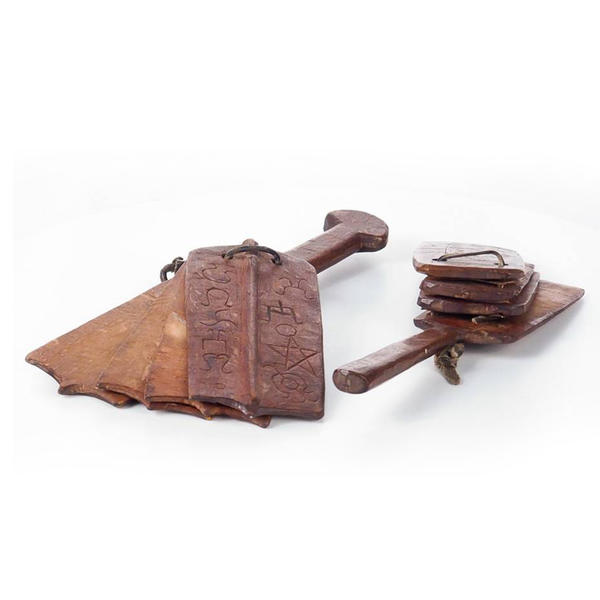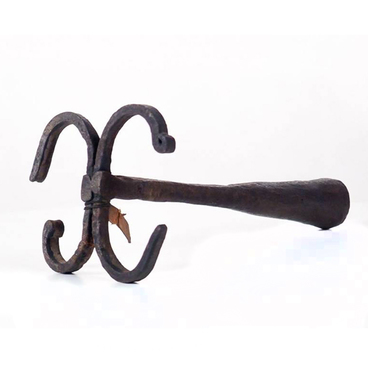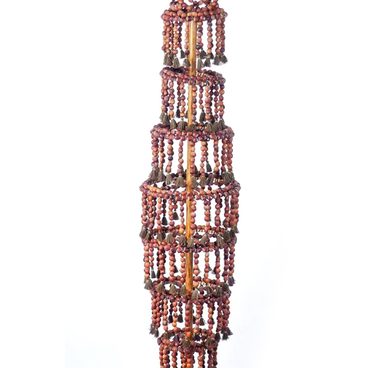The hand-rattles — pkhachich [пхъэкIыч] — is the oldest, the most popular and favourite percussion instrument of the Adyghes, which in old times was indispensable at any festivity. The name is derived from the word пхъэ meaning ‘wood’ from which hand-rattles were made, and кIыч, imitation of the sound produced by dry wooden planks if struck together.
#1
Hand-rattles
#4
#3
The pkhachich consisted of dried resonant planks 10-17 centimetres long and и 5-10 centimetres wide. The hand-rattles could have three to seven such planks which were tied to the handle with a thin but strong strap. The instrument with the handle was up to 30-35 centimetres long.
#5
The musician held the hand-rattles by the handle while pulling the rope with planks strung on it onto his wrist. It enabled him to control the planks — fitting them together tighter or looser — thus changing the strength and rhythm of the sound produced.
#7
When the instrument was shaken, it rattled loudly and the sound was similar to the clatter of hooves. From time immemorial, the Adyghes used to say: We spend the whole life on horseback; we compose songs when riding a horse. The clatter of the horse’s hooves is the sound of our hearts.
Hand-rattles beat the rhythm of traditional songs and dances. Typically, the pkhachich sounded together with the kamyl (end-blown flute), the shichepshin (Adyghe violin) or the pshiney (accordion).
In the past, the phachich was made from softwood species such as alder or cedar. However, modern instruments usually deaden the sound of such rattles, that is why at present harder wood- ashwood, boxwood, and chestnut — is used for the pkhachich to sound louder and more resonant.
Hand-rattles beat the rhythm of traditional songs and dances. Typically, the pkhachich sounded together with the kamyl (end-blown flute), the shichepshin (Adyghe violin) or the pshiney (accordion).
In the past, the phachich was made from softwood species such as alder or cedar. However, modern instruments usually deaden the sound of such rattles, that is why at present harder wood- ashwood, boxwood, and chestnut — is used for the pkhachich to sound louder and more resonant.
#13
Like other musical instruments, hand-rattles were often decorated. Typically, they had carved traditional ornaments or geometrical figures. In this way, the Adyghes accentuated the bonds of the musical instruments with the world of plants as well as the bonds between music itself and fertility and abundance.
#12
The legend about the origin of the pkhachich is described in the Adyghe Nart epos. According to the lore, the instrument was invented by a Nart named Ashchamez. He tooled a few small planks made of plane wood, put them together and tied the edges on one side. The ancient hero thought that the sounds of the pkhachich complement the melodies of the Adyghe flute.
read morehide
00:00
00:00
1x
Hand-rattles
Creation period
Late 19th century
Technique
Wood carving, polishing
Exhibition
7
Open in app
Share



